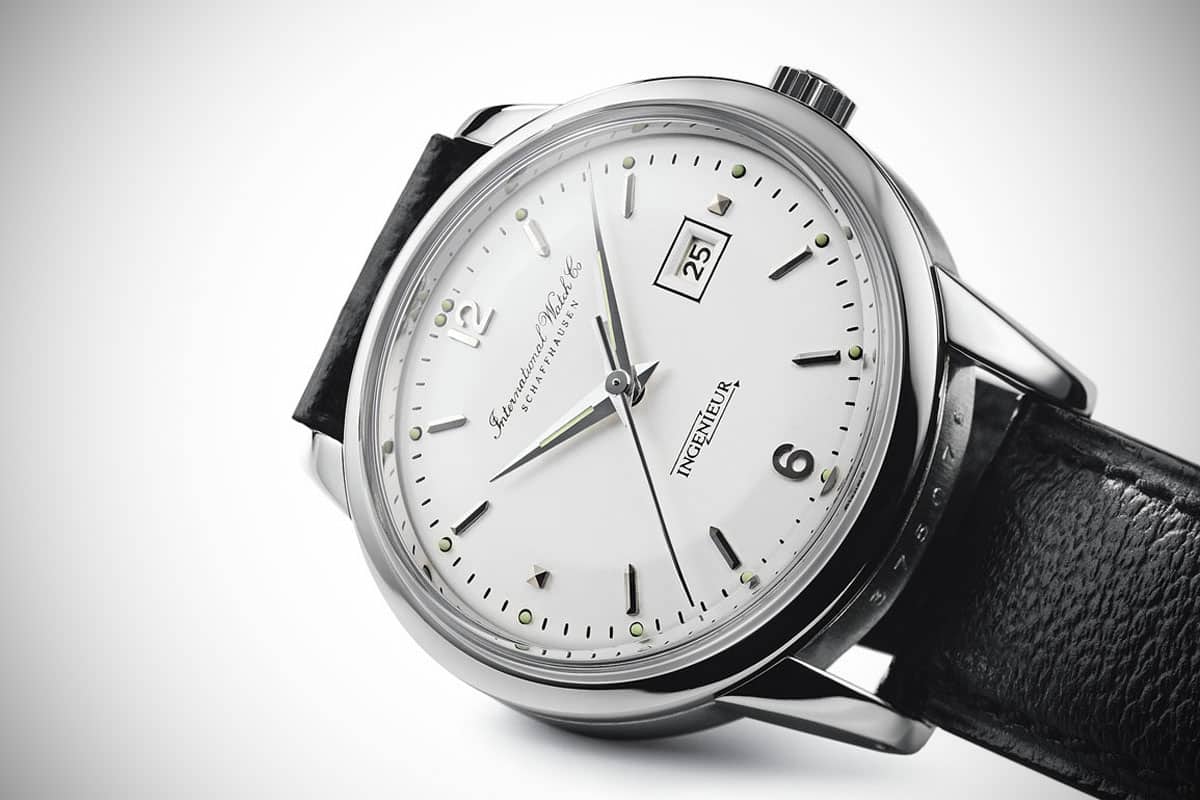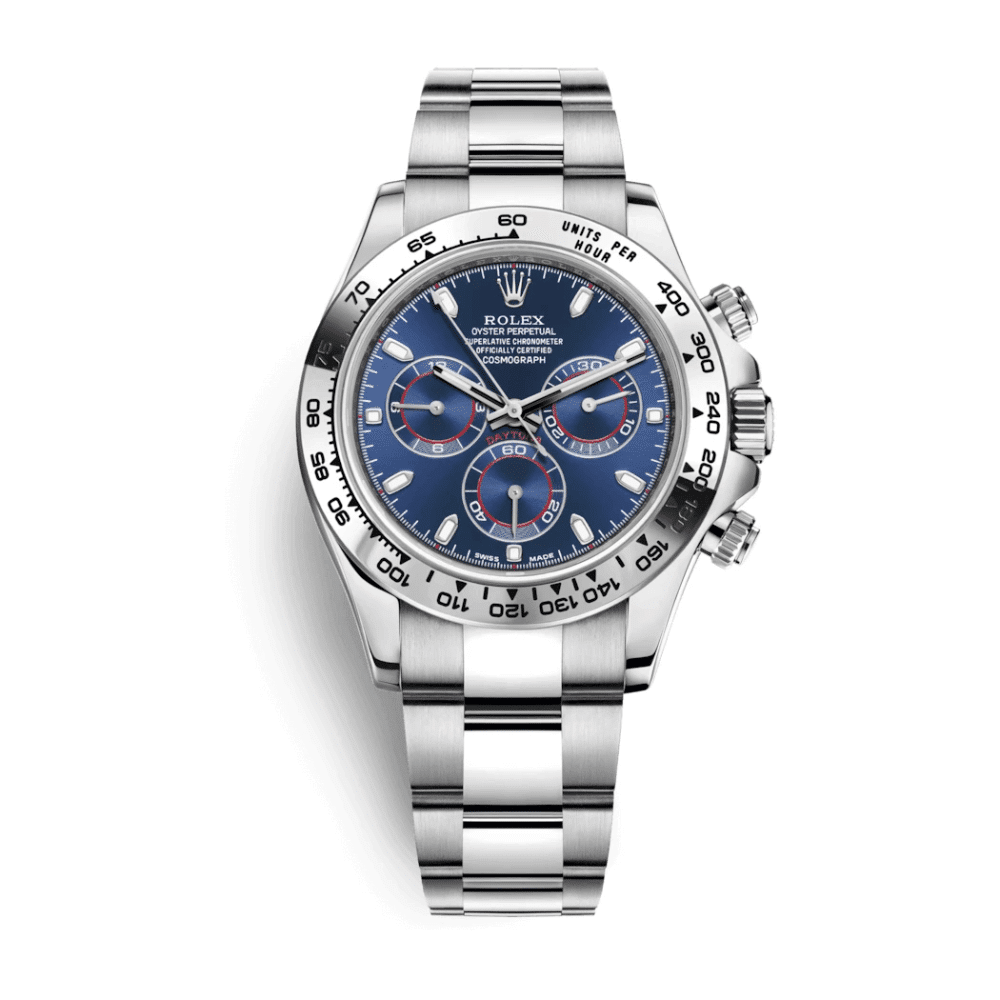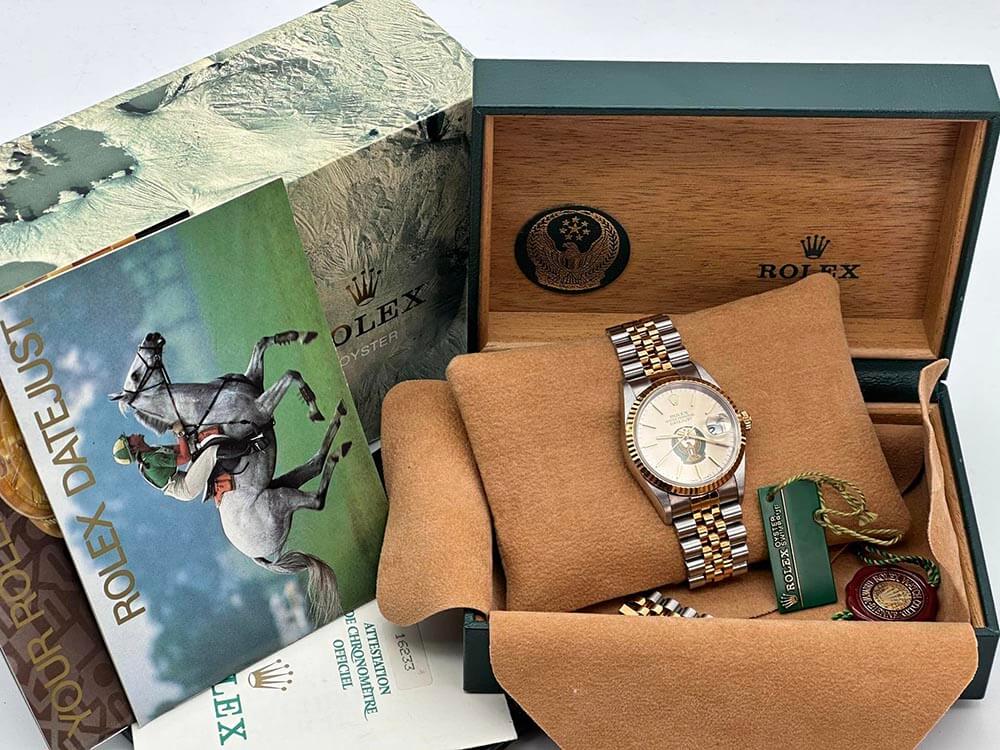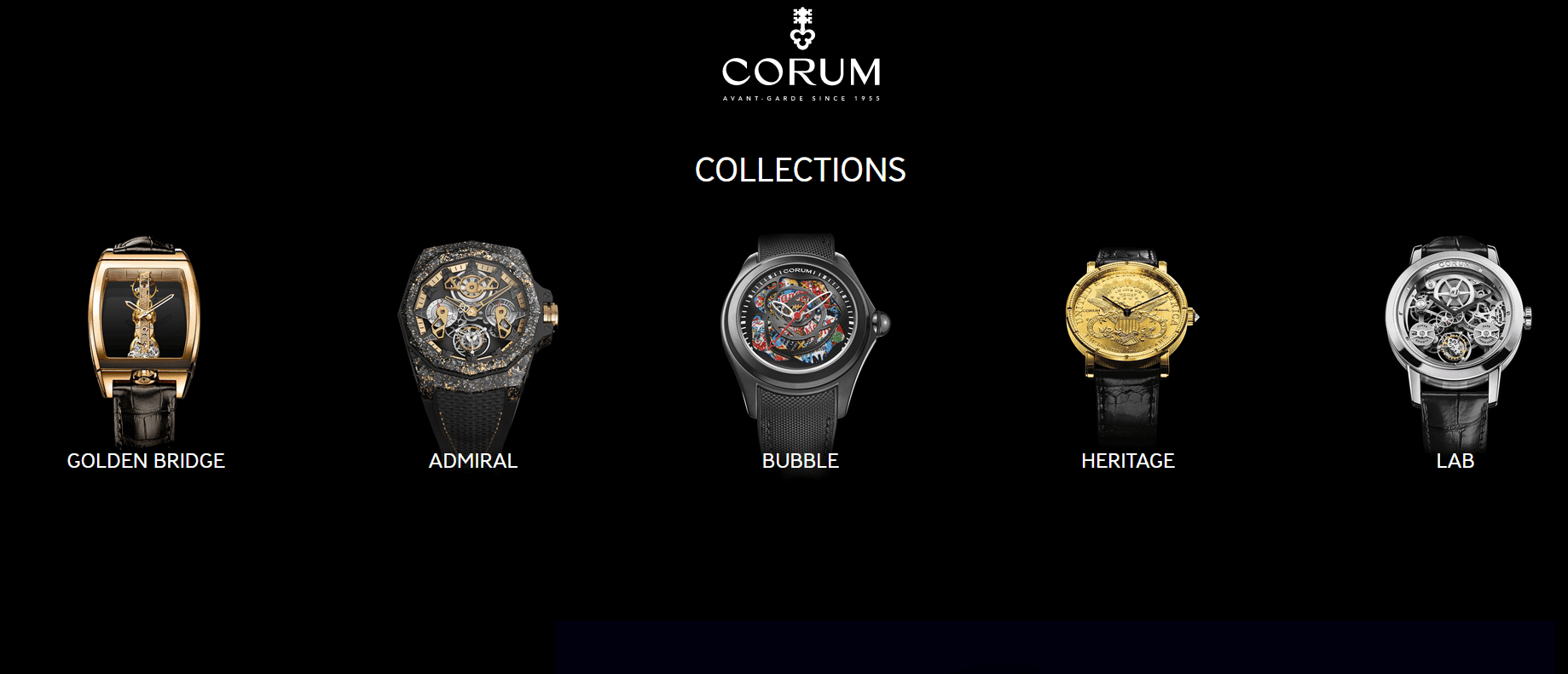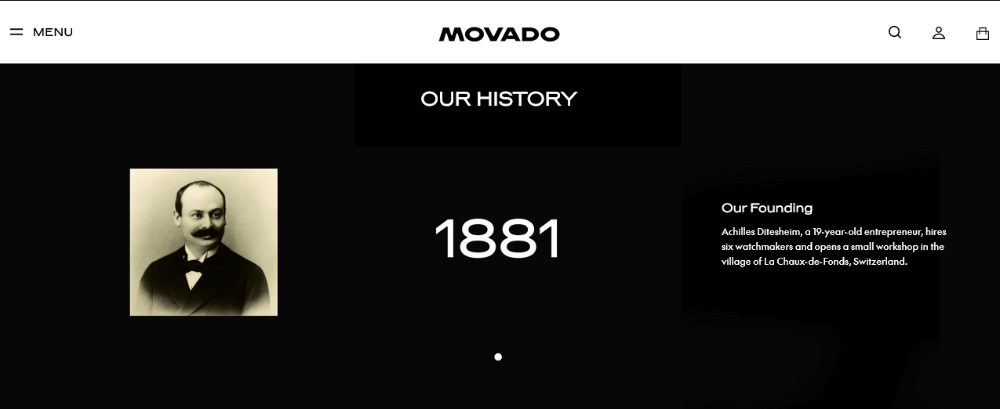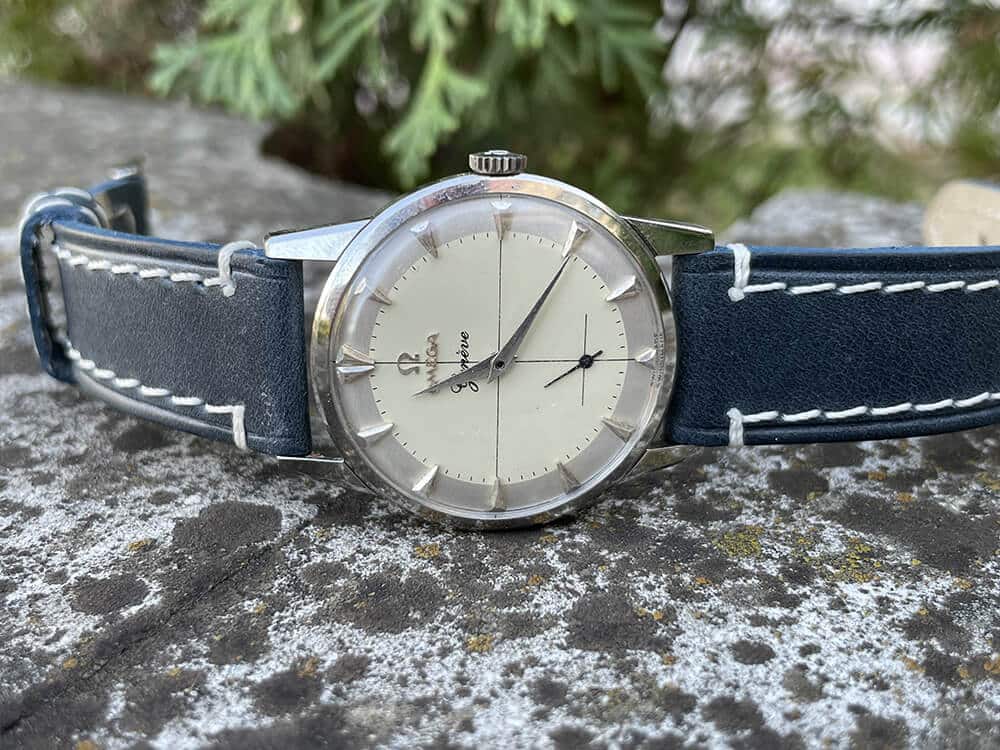In the early 1970s, freelance watch designer Gerald Genta was taking a walk on the shores of the Lake of Geneva when he noticed a diver, whose helmet was secured to his diving suit with screws. This tiny detail inspired him to adopt a modernist, distinctly technical approach to form that was to revolutionize watch design. Instead of concealing the screws or functional bores, he left them plain for all to see on the bezel. For IWC Schaffhausen Gerald Genta designed the legendary Ingenieur SL, reference 1832. Five rudimentary bores could be seen in the bezel. These engaged with a special tool during manufacture to bring the bezel into position for securing with screws.
The crown and case back were screwed tight to make the watch pressure-resistant to 12 bar. The Ingeniuer SL had its market launch in 1976. Its eye-catching design stood for masculine values: it was rugged and sporty with a distinctly technical appeal, and has influenced the appearance of the Ingenieur watch family to this day.
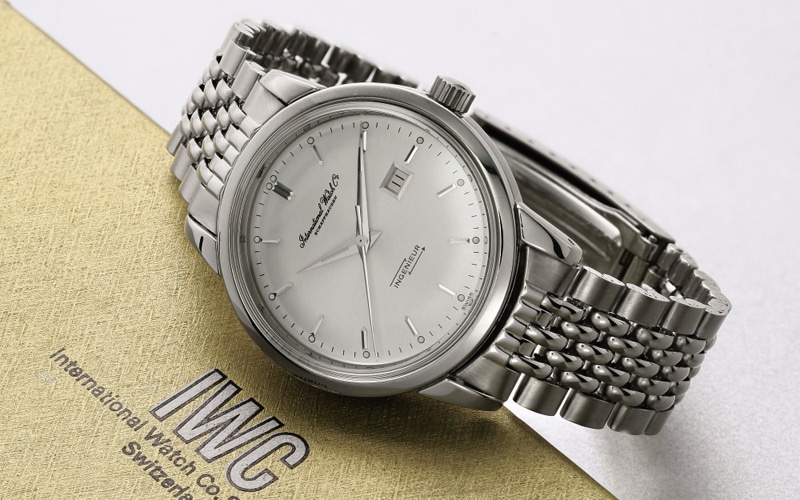
The Ingenieur watch family’s success story, incidentally, dates back to the 1950s. It was a time of economic boom. An increasing number of technical appliances were making their way into ordinary households. These generated magnetic fields that adversely affected the accuracy of wristwatches. Engineers tend to work in areas with magnetic fields. By this time, IWC had perfected its protection against magnetic fields with the help of a soft-iron dial to the point that making a new watch line especially for this profession seemed like a good idea. The lightning bolt, a physical symbol for electricity, became the signature for a new watch class named after its main target group: Ingenieur.
The first Ingenieur, unveiled in 1955, was in several respects a quantum leap for watchmaking. The developers’ aim was to make a perfectly protected and high-precision watch, wound solely by movements of the wearer’s arm. IWC had already made the leap from hand-wound to automatic movements 4 years previously. However, it was only with Ingenieur, watch that IWC catapulted itself into the vanguard of Swiss manufacturers competing to create the first bidirectional automatic movement. The winding mechanism in the 852 and 8521 calibres was the brainchild of the then Technical Director, Albert Pellaton. The Pellaton system did not convert the movement of the rotor into a rotary movement: it featured an eccentrically shaped cam and a rocking bar with two pawls that translated into a bidirectional to-and-fro movement. This is an unusually efficient arrangement that is also found in a number of models in the latest collection.
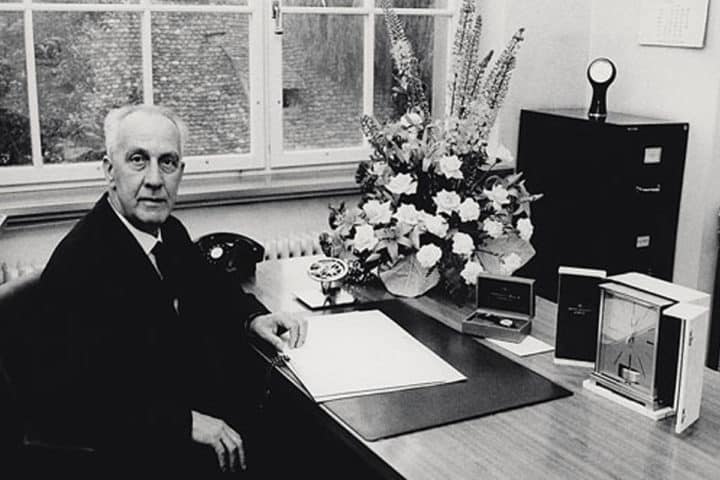
In the late 1950s, the movement in the Ingenieur, watches was successively improved until, in 1964, it reached the level of perfection found in the 854 and 8541 calibres. The second generation of the Ingenieur, recognizable by its new date window, was launched in 1967.
In the 1970s and 1980s, quartz timepieces reigned supreme on the world’s watch markets. IWC used quartz-regulated oscillators to keep time in certain Ingenieur models. In 1982, IWC launched the only water-resistant Ingenieur pocket watch. This model featured protection against magnetic fields and had a spring-mounted IWC pocket watch movement. In 1983, the new Ingeniuer SL (Reference 3505) was just 10 millimeters high and back on sale with a mechanical automatic movement: the 375 calibre was just under 4 millimetres in height. One of its typical features was the diamond pattern on the dial.
In 1985, with Ingeniuer in titanium, Reference 3350, the Schauffhausen-based manufacturer underscored its excellent reputation was one of the watch industry’s great materials innovators.
In 1989, IWC presented the Ingenieur Automatic “500,000 A/m”, Reference 3508, whose impressive protection against magnetic fields withstood even a magnetic resonance tomograph with 3.7 million A/m. For technology enthusiasts, the record-breaking watch is one of most sought-after collector’s items.
In 2005, 50 years after the first IWC Ingeniuer, the watch family celebrated a stirring comeback with three new models. The Ingenieur Automatic, Reference 3227, assumed the cool engineering aura of the Ingenieur SL by Gerald Genta. The newly developed IWC manufcatured 80110 calibre with its Pellation winding system also featured and integrated shock-absorption system to protect it against impacts and vibrations. As a symbol of the new partnership between IWC and Mercedes-AMG, IWC unveiled two Ingenieur models in titanium. They emphasized the values shared by the technology specialists in Schauffhausen and Affalterbach: precision, engineering experties and performance.
In 2007, the Big Ingenieur’s extra-large 51113 calibre, Pellaton winding system and 7-day power reserve created a sensation. For fans of mechanical timepieces with a penchant for absolute precision, it was also available as a chronograph with a tachymeter used for displaying speeds.
